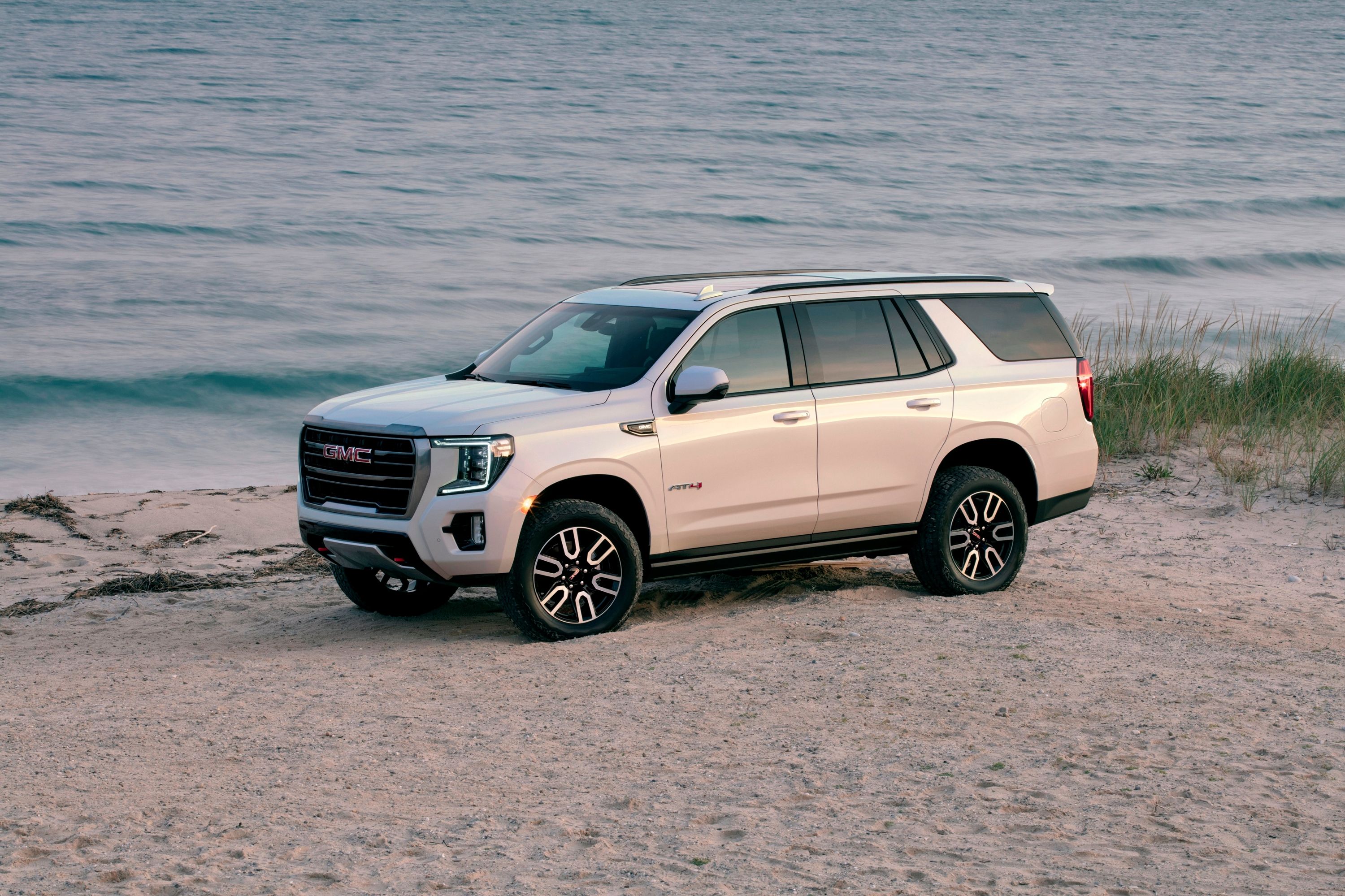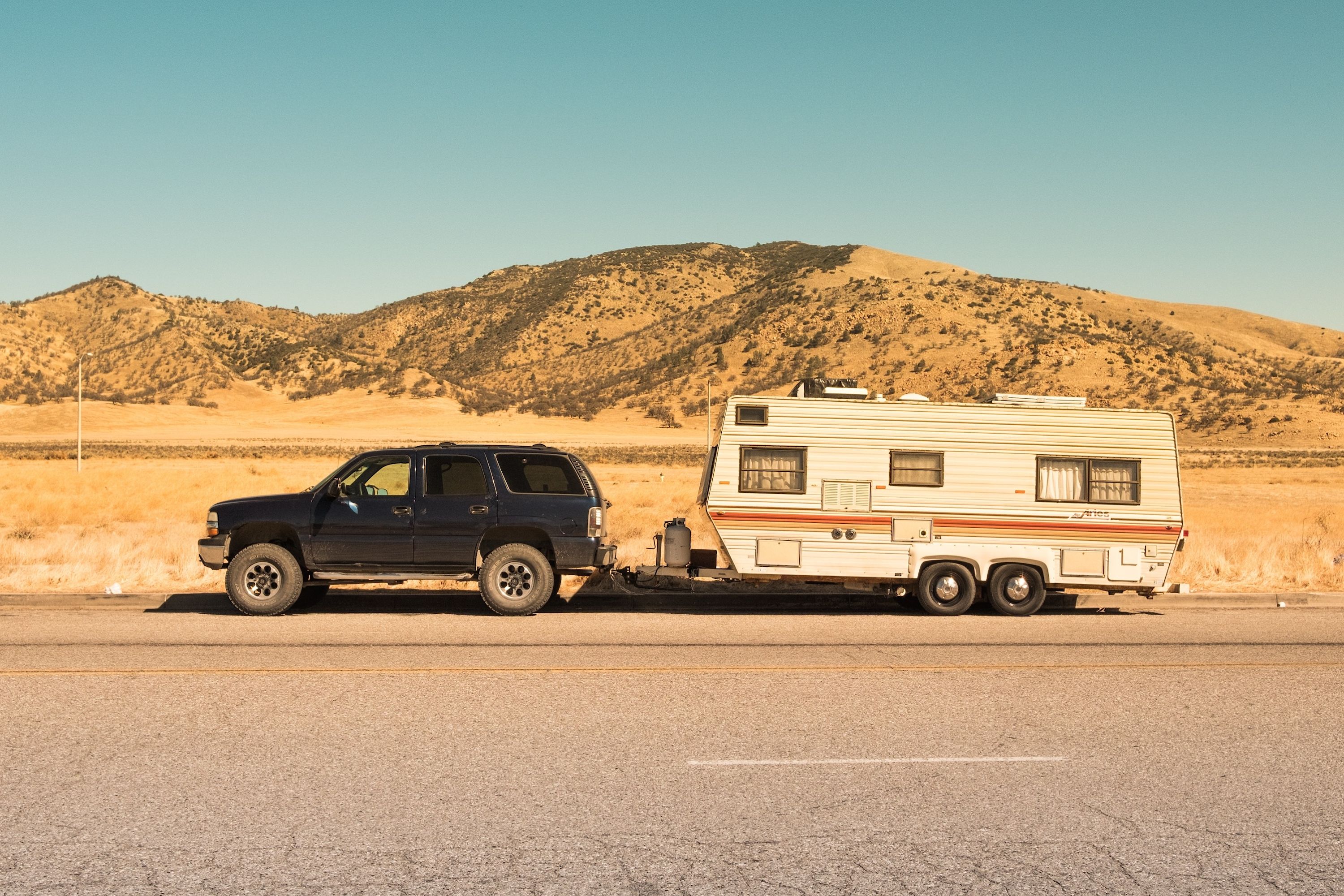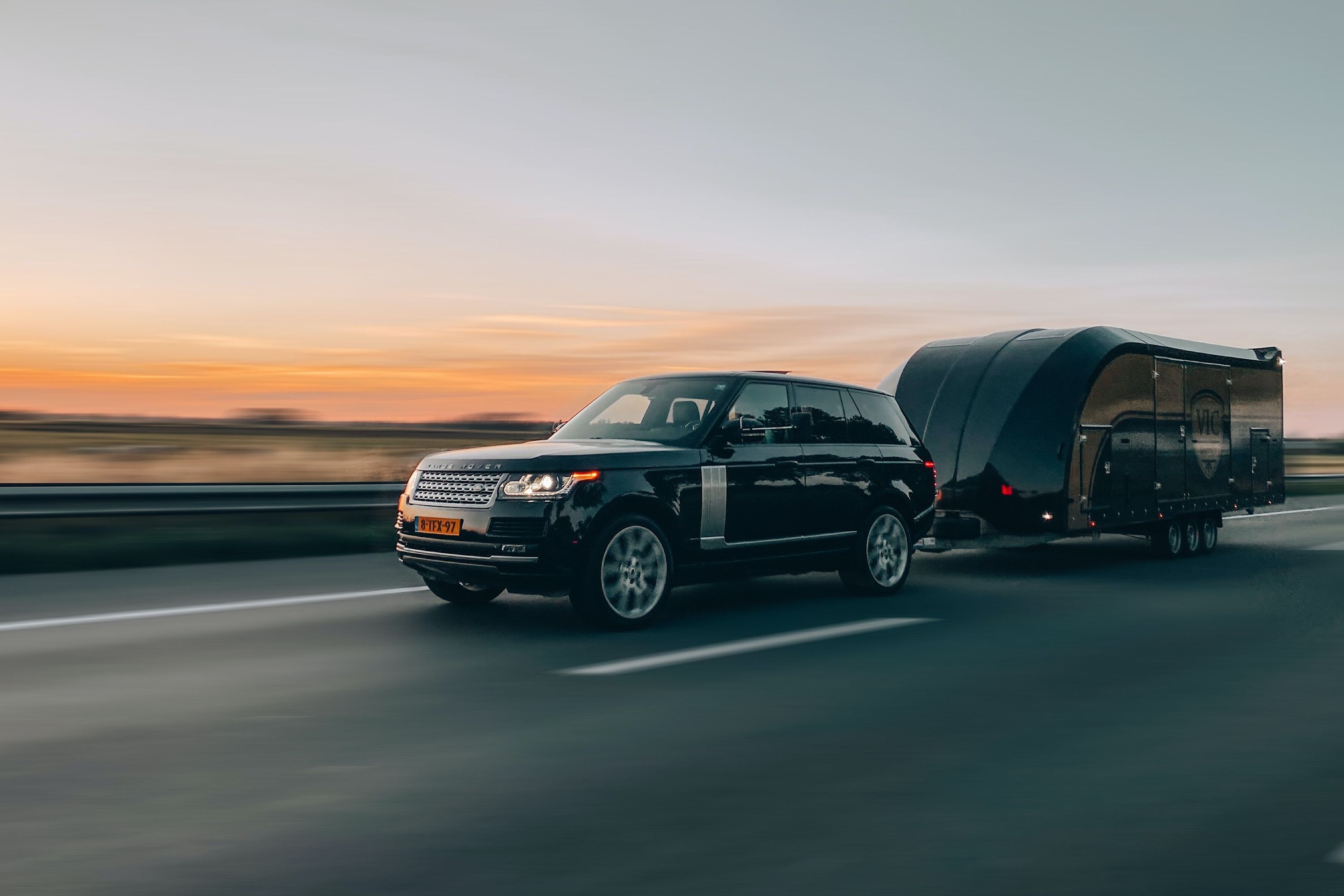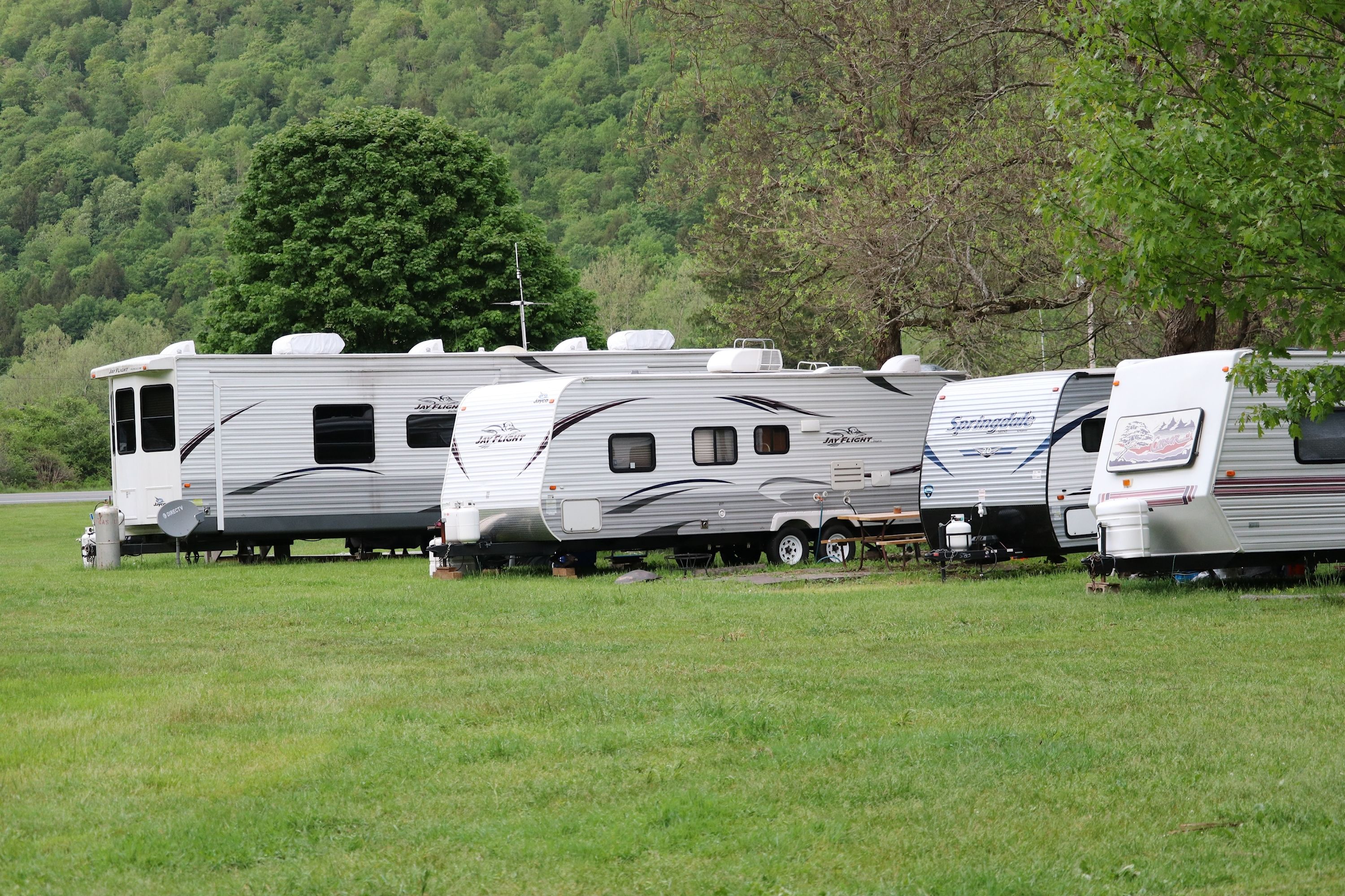
There will come a time in your life when all your hard work will pay off and earn you the means to tour across the country with a camper, boat, or that jet ski you've always wanted to have at your family getaways. When the time comes that you need to use your vehicle to tow a camper or trailer from one place to another, you'll want to know how to tow safely, what the laws and regulations are to keep you out of trouble, and what the best way to tow is. Though you may want the best and biggest camper or caravan, boat or trailer, there are many safety requirements you'll have to consider and many different laws and regulations that vary from state to state to take into account before making a purchase.
Legal Towing and Trailer Hitch Laws by State
In the USA, the laws and regulations around towing are complicated and vary depending on which state you're in. There are several rules that you can follow, however, that are standard in every state. So, if you are towing a trailer behind your vehicle, make sure the following is in place:
- License Plate Light: The vehicle or trailer you're towing is fitted with an illuminated license plate. Driving without a license plate on the trailer could result in you receiving some hefty federal fines.
- Operable Back Lights: When towing a trailer, you should ensure that all the lights, including indicators and brake lights, are functioning correctly.
- Safety Chain: There must be a safety chain connecting the vehicle or trailer in tow to the vehicle towing's tow hitch, just in case the hitch connection fails.
- Reflectors: Small or big, it's important to have reflector lights on the trailer you're towing so that other road users can easily spot you and the trailer in low-visibility conditions.
- Clearance Lights: Clearance lights are also a must-have as they improve the trailer's visibility to other road users and give an idea of how wide the trailer is.
Some of the trailer laws that differ by state require that you have even more safety equipment and adhere to other limitations such as:
- License & Limits: Some states require that you have a certain endorsement on your driving license in order to drive a vehicle that's towing, and some have the requirement that you're over a certain age.
- Breakaway Brakes: Another precautionary measure, breakaway brakes apply stopping force to the actual trailer in the event that the hitch fails and it disconnects from the vehicle doing that doing. Check if this is a requirement in the state you intend to operate in.
- Tie Downs: Some states require that you tie any cargo that isn't fully contained in the trailer down with cargo straps or tie-downs.
- Flares: In the event of an accident, some states will require that you release a flare if you're able to in order to clear off the section of the road.
- Dimension Limits: There a various trailer length limits and width limits you'll have to research and adhere to when driving cross country with a trailer. What is expected in one state may not be the same once you've crossed the border, so plan accordingly.
Contrary to popular belief, it isn't illegal to have a ball hitch if you're not towing anything, and while there are no specific laws for trailer hitches in the United States at the time of writing, there are laws that you may be breaking by leaving a trailer hitch exposed. For example, the law in most states specifies that you may not cover up any numbers or letters or the state of origin on your vehicle's license plate - if you aren't towing anything and your trailer hitch obscures your number plate, you are in contravention of the law.
Rules and Limits For Towing by State
| As an example. here are just some of the specific trailer length, height, and width limits by state, followed by some of the trailer towing speed limits by state: | New York | California | New Jersey | Florida | Oklahoma |
|---|---|---|---|---|---|
| Lenth | 48-feet | 40-feet | 40-feet | 40-feet | 40-feet |
| Height | 13.5-feet | 14-feet | 13.5-feet | 13.5-feet | 13.5-feet |
| Width | 8.5-feet | 8.5-feet | 8-feet | 8.7-feet | 8.5-feet |
| Speed Limit | 65 mph | 70 mph | 65 mph | 70 mph | 75 mph |
Basic Driver’s Guide To Towing a Trailer
Now that you know some of the regulations for towing, here is an easy guide for learning to drive with a trailer in tow for the first time:
- Vehicle Type: Know what type of vehicle is best for towing - the smaller the car, the less likely it is to be rated for towing. High torque output, a rear-wheel drivetrain, and a long-wheelbase setup all make for the highest possible towing capacities in a vehicle. A high axle ratio also improves towing capability. There are many vehicles to consider when looking for the best SUV for towing a trailer, from the GMC Yukon to the Ford Expedition Max.
- Hitches: There are three types of hitches - conventional hitches, of which there are five different classes, gooseneck hitches, and fifth wheel hitches. The type of hitch on the vehicle will also determine the size of the hitch ball and ball mount.
- Class 1 Conventional Hitch: Up to 2,000 lbs.
- Class 2 Conventional Hitch: Up to 3,500 lbs.
- Class 3 Conventional Hitch: Up to 8,000 lbs.
- Class 4 Conventional Hitch: Up to 10,000 lbs.
- Class 5 Conventional Hitch: Up to 16,000/17,000 lbs in regular trucks and SUVs, and 18,000/20,000 lbs in commercial applications.
- Gooseneck Hitch: Around 30,000 pounds - ideal for livestock trailers, horse boxes, flatbed equipment haulers.
- Fifth Wheel Hitch: Around 30,000 pounds - good for RV trailers and large campers.
Vehicles like the Ram 3500 are able to pull up to 37,000 lbs with a fifth wheel at the time of writing, but there are many more on our list of the best trucks for towing with such impressive towing capabilities.
You also get different types of hitch receivers, ranging from bumper hitches, front hitches, weight-distribution hitches, and pintle hitches. Always ensure you use the right application for your needs.
- Hooking Up: If you're going to be towing a vehicle or trailer for the first time, we have a comprehensive guide to towing a trailer with your vehicle here. If you're set up to tow and just need a refresher on how to go about it, you can follow these steps:
- Line up the trailer's coupler directly with the tow hitch on your vehicle using your rearview camera or the help of another person.
- By using the jack that's attached to the front end of the trailer's frame, adjust the height of the trailer so that the coupler is just slightly above the vehicle's tow hitch.
- Secure the trailer's safety chain around the vehicle's tow hitch.
- There is a release on the trailer coupler that you'll need to raise before you can latch the trailer coupler onto the vehicle's tow hitch. Once properly attached, the coupler's release will click back into the locking position.
- Lift the tongue to ensure that the coupler is securely attached to the tow hitch.
- Raise the trailer jack up so that it is off the ground and completely out of the way.
- Finally, connect the trailer's electrical connector to your vehicle and check that the indicator and brake lights are all working.
- Secure any guide wheels or other dangling equipment out of the way.
- Check that all lights are in working order.
- Loading Tips: Tips for driving with a trailer start with how you load, believe it or not.
- Equal weight distribution is key to loading the trailer as too much weight at the rear of the trailer could cause it to fishtail, while too much weight up front could cause the vehicle to sag at the rear, resulting in poor handling and reduced braking power. Ideally, spread the load equally over the axles of the trailer.
- Adjust your vehicle's side-view mirrors to ensure that you can see all the way to the rear ends of either side of the trailer. If need be, consider equipping your vehicle with telescoping tow mirrors.
- Make use of ratchet straps or tie-downs where need be to secure the cargo in the trailer.
- Driver-Assist Tech - Many automakers offer advanced driver-assistance technologies that will prove very helpful when you're driving with a trailer. Some vehicles come equipped with these as standard, but you may have to pay extra in some cases. If you tow regularly, it's a worthwhile investment.
- Trailer-Sway Control
- Blind Spot Monitoring
- Backup camera
- Trailer cameras
- Trailer tire pressure monitor



